THIS WEEK: Marvel celebrates forty years of Miracleman with an all-new one-shot, the first new standalone Miracleman comic in nearly eight years. Does Miracleman #0 do the character and his world justice?
Note: the reviews below contain spoilers. If you want a quick, spoiler-free buy/pass recommendation on the comics in question, check out the bottom of the article for our final verdict.
Miracleman #0
Writers: Neil Gaiman, Ryan Stegman, Ty Templeton, Mike Carey, Peach Momoko, Zack Davisson, and Jason Aaron
Artists: Mark Buckingham, Ryan Stegman, JP Mayer, Ty Templeton, Paul Davidson, Peach Momoko, and Leinil Francis Yu
Colorists: Jordie Bellaire, Sonia Oback, Ty Templeton, Antonio Fabela, Peach Momoko, and Sunny Gho
Letterers: Todd Klein, VC’s Joe Caramagna, VC’s Ariana Maher, and Ty Templeton
Cover Artists: Alan Davis & Alejandro Sánchez
It’s hard to believe it’s been over a decade since Marvel Comics gained the rights to Miracleman. The modern iteration of the British Golden Age character Marvelman, revived in 1982 by Alan Moore and Garry Leach, and brought to the States and given his current miraculous moniker by Eclipse Comics, had been in legal limbo for decades before the House of Ideas announced a deal in 2009 with the character’s creator, Mick Anglo, to purchase the rights to the character. Since then, though, things have been relatively quiet on the Miracleman front, with reprints of the original Eclipse series and some of the Golden Age stories, but the only new material coming in the form of an Annual in 2014 and a one-page entry in 2019’s Marvel Comics #1000 special.
This week’s Miracleman #0, touted primarily as a celebration of the fortieth anniversary of the character’s modern iteration, is celebratory in a few other ways. After a tease in the Timeless one-shot earlier this year, Marvel is celebrating that Miracleman is finally back with new stories. For a lot of readers, the special this week is probably their first encounter with a character with a long and interesting history. The new one-shot, then, seems like the perfect place to offer new readers an on-ramp to Miracleman and his world ahead of the launch of Neil Gaiman and Mark Buckingham’s Miracleman: The Silver Age later this month.
Readers looking for a primer on who Miracleman is and what his world is like will most likely be disappointed by Miracleman #0. Framed by a sequence by Gaiman and Buckingham, the issue is primarily an anthology of stories being read in-universe by Miracleman, all of which were inspired by the character. For real-world readers, the stories were more specifically inspired by the work of Alan Moore and many artists with whom he collaborated on revamping and redefining Miracleman in the ‘80s. The result is a mix of stories featuring alternate versions of the character, spotlighting his supporting cast, and examining the influence he has had on both the world of the series and on the comics industry.
It’s an interesting exercise, and the stories that come of it are a mixture of entertaining, thought-provoking, and just plain fun. Ryan Stegman’s extreme ‘90s take on the character captures the flavor of the era well both in terms of the visuals and the script. There’s something for longtime fans here, too, as it’s hard not to notice the resemblance Stegman’s leather jacket-clad Miracleman has to Todd McFarlane’s ‘Man of Miracles’ – a character originally intended to be Miracleman before legal disputes curtailed those plans – a resemblance driven home by Stegman’s apparent amping up of the McFarlane influence on his artwork.
Other stories are less specifically about Miracleman. Mike Carey and Paul Davidson tell a tale in which the aliens known as Warpsmiths are cosmic detectives, and one of them styles himself after a hardboiled private eye in a crime novel. Peach Momoko and Zack Davisson’s story imagines a world where speaking Miracleman’s magic word, ‘Kimota!’, leads to a transformation that’s more horrifying than magical. Ty Templeton presents Miracleman’s supporting cast and the world in which he lives as newspaper comic strip characters, spoofing existing strips to great effect. Just as Moore and his collaborators did forty years ago with the original Marvelman stories of the ‘50s, these three stories take elements of the Miracleman mythos and give them new and interesting context, and the results are fascinating and highly enjoyable.
The final story of the issue, Jason Aaron and Leinil Francis Yu’s “The Man Whose Dreams Were Miracles,” is the longest of the one-shot’s stories, and tells the story of an aging comic book writer who is visited by multiple incarnations of his fictional creation, Miracleman. The most overtly meta story of the issue, Aaron and Yu offer a commentary on the nature of stories and how they and the characters within them shift to reflect the times in which they’re produced, for better or worse. Given Miracleman’s essential state of limbo for the past thirty years that’s something of which the character has largely been spared, but Stegman and Aaron & Yu’s stories both provide an interesting glimpse into what could have been for the character.
Miracleman #0 is set up to be for everyone. Readers who aren’t familiar with the character can still enjoy the stories present on a surface level, while those who are aware of Miracleman and his history will appreciate the metatextual levels present in all of the offerings. And as an introduction to the actual Miracleman, Gaiman and Buckingham’s framing story presents a man, albeit one with god-like powers, who is essentially bored and looking for escape in fiction. Who can’t relate to that?
Final Verdict: Buy.
Rapid Rundown!
- Spider-Man #1
- So, there’s a pretty big thing that happens in Dan Slott and Mark Bagley‘s new Spidey first issue, more than in most recent Spider-comics. If you’re a Spider-completionist, you’ll definitely want to pick this one up. As a jumping-on point sort of comic, which is what you might expect from an adjective-less Spider-Man #1, it’s slightly less effective, although it does make the effort—ultimately, I’d say your mileage may vary. —ZQ
- Writer Dan Slott teams up with penciler Mark Bagley and inker John Dell to spin more tales of our friendly neighborhood wallcrawler. In conjunction with the status quo of Spidey’s other book (still don’t like the green highlights), this one picks up with Peter getting a call from his boss to help intercept a hijacked truck of his equipment and shifting into a battle with cosmic implications. Spider-Man is a fun, fast-paced story, the opening is a hoot with the corny spider jokes and blasé New York onlookers, to then make a dark shift in tone as an old enemy emerges and new ones come out of the shadows. If you’re like me and didn’t read any of the initial Spider-Verse comics, but are familiar with the animated movie, Slott does a good job of easing readers into the high concept of a multiverse based around Spider-heroes. And as always Bagley does his magic, using solid storytelling to deliver dynamic action scenes. —GC3
Miss any of our earlier reviews? Check out our full archive!


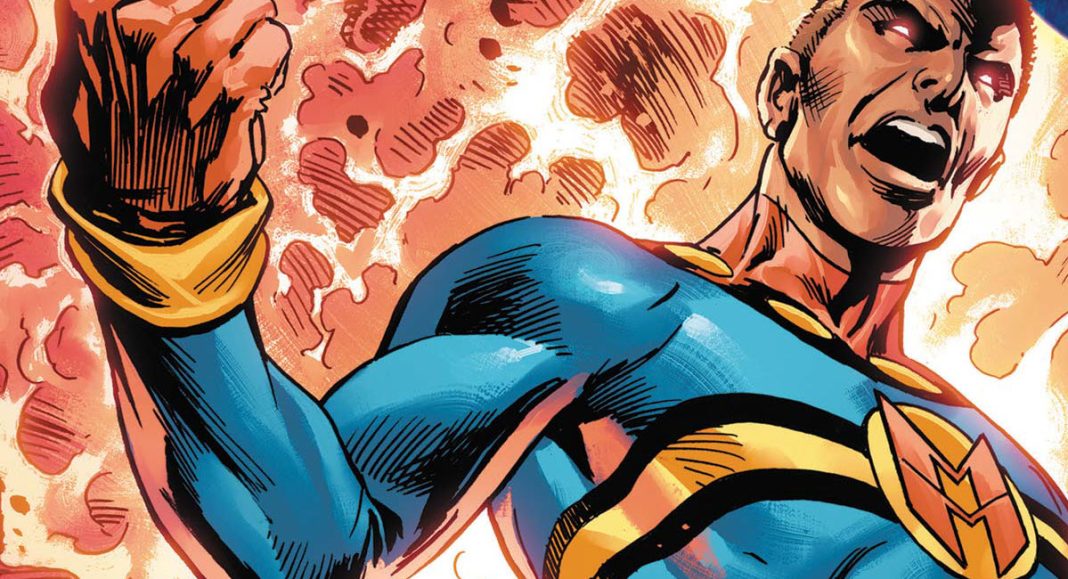
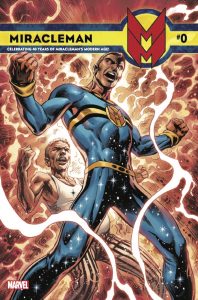
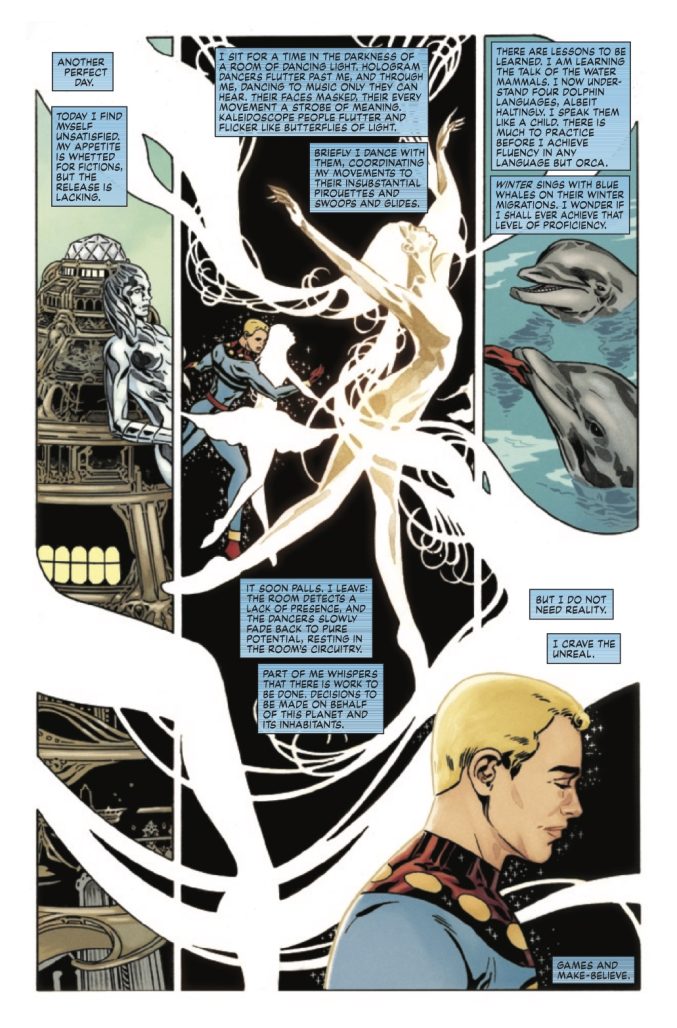
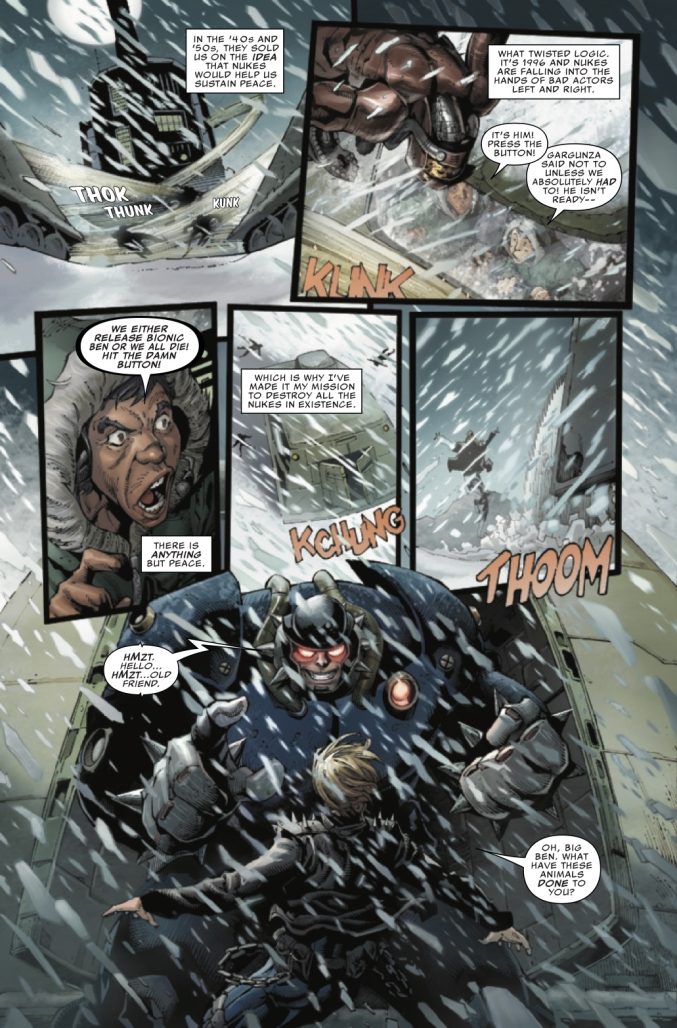
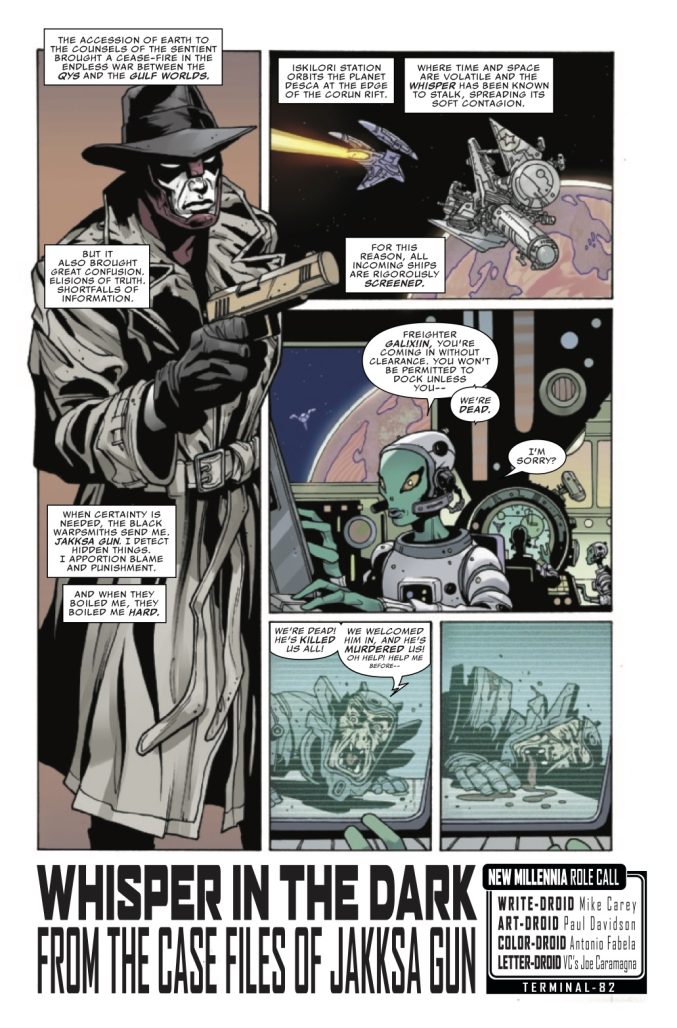
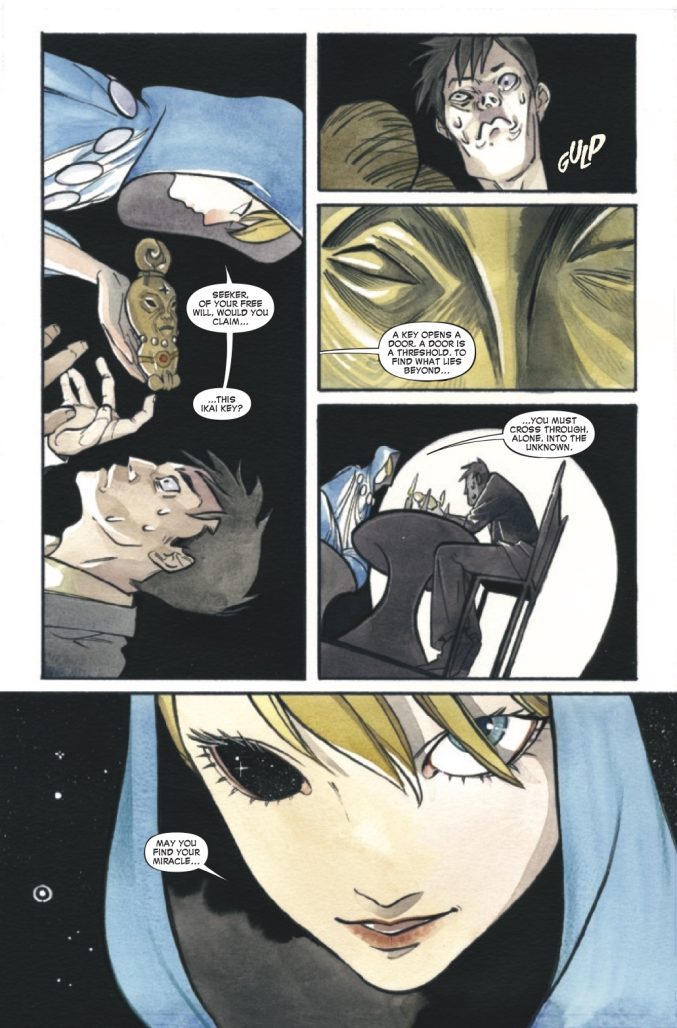
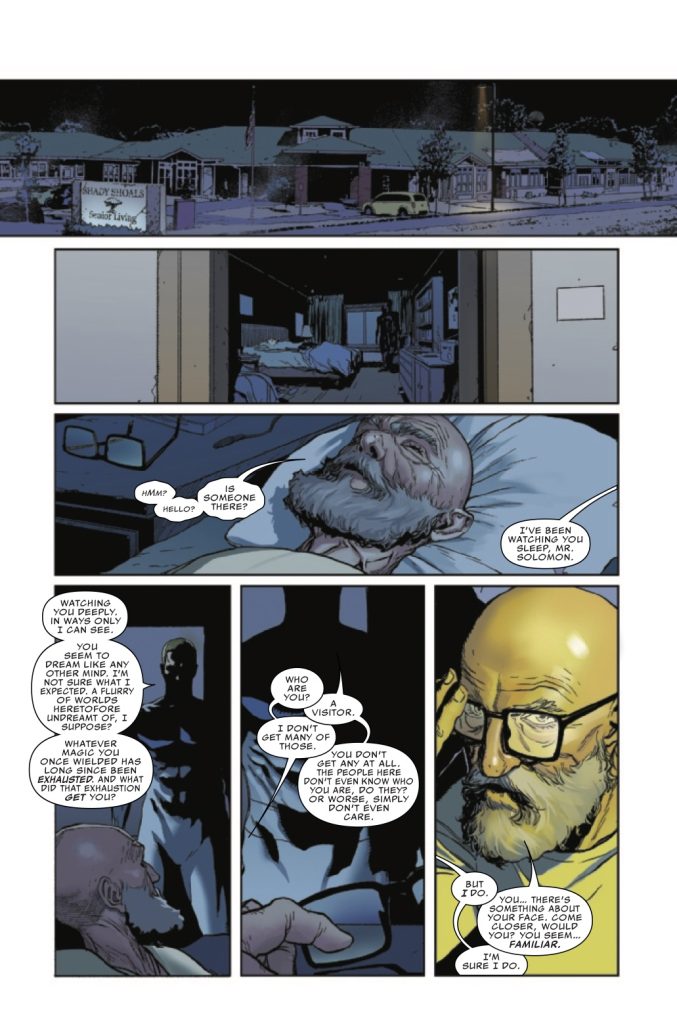
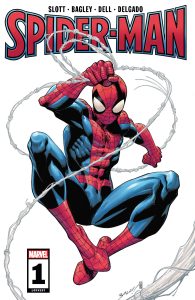
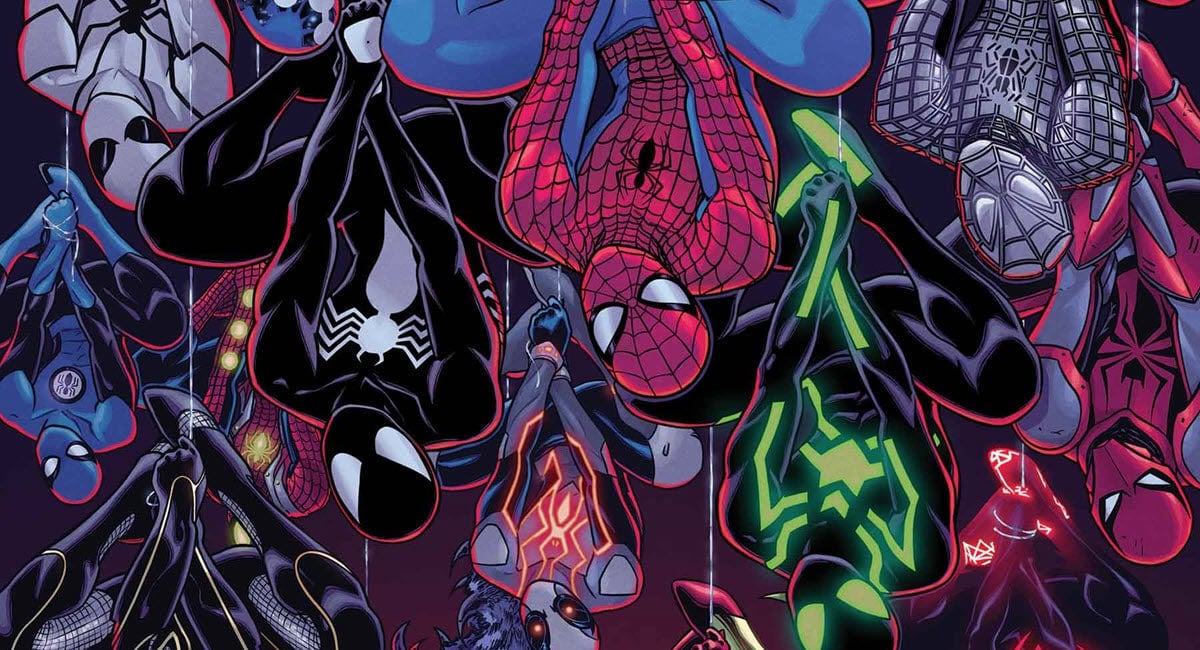




The Miracleman #0 framing sequence is not new, but is taken from the Miracleman Apocrypha series from Eclipse.
Mick Anglo did not own Marvelman. He was a work for hire artist who reworked the Captain Marvel family characters in the 1950s after they stopped being published in the US. It was in the public domain just like Dez Skinn said it was 40 years ago. I believe that Marvel realized this several years ago (after Mick Anglo died in 2011) and quietly went about securing the rights to the Alan Moore version because basically anyone could take the public domain Marvelman and do their own version of it. Marvel has yet to explain why the series, which had been selling well, suddenly went on a years long hiatus in 2017 only to finally be revived more than five years later. Really, Marvel has never explained this, even when announcing the Dec. 2022 publication of Miracleman #0. I believe that Neil Gaiman knows. He once said that there would be Miracleman news announced at the 2019 San Diego Comicon, and then. . . nothing.
Marvel actually acquired the rights to Marvelman before Mick Anglo passed away, though they did seem to hedge their bets wether this actually included the modern version first published by Warrior, and later resumed by Eclipse. As Padraig O Mealoid pointed out in his very interesting Poisoned Chalise blog on this very website, they refrained from using the name Miracleman at first and started off their reprint endeavour with the Mick Anglo material, for which there was no real demand.
Three issues were sollicited of Miracleman Silver Age, issue #3 (being the first issue not previously published) appearing in Previews the month of issue #1’s non-appearance. I believe there was one tweet from Neil explaining that there were some unexpected legal issues keeping the project on hold. Every contract related to the Marvel Miracleman deal seems to contain a non-disclosure agreement, but it seems safe to say that there is probably a huge difference between securing rights to reprinting old material, and rights for actually publishing newly created material featuring Miracleman and assorted characters, as all the modern material has been created under creator-owned contracts. Padraig O Mealoid considered Alan Davis being the most likely obstacle as he still owns rights to the Warpsmiths…..
Comments are closed.